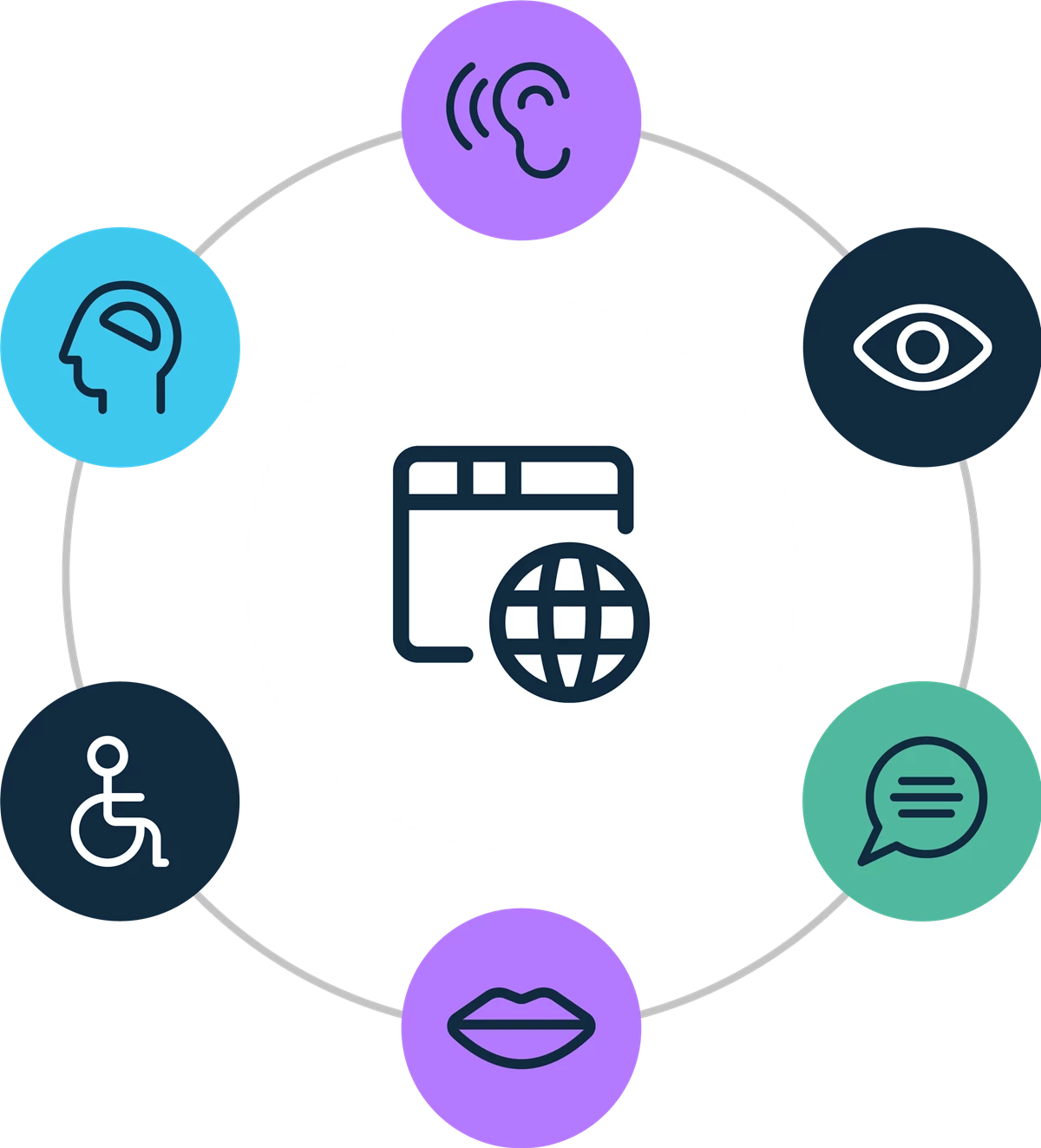Technology is changing the world of work, empowering employees to do more and collaborate in exciting and innovative ways. Yet, for those with physical, sensory or cognitive impairments, accessing workplace technology can be difficult. Overcome these difficulties with a commitment to providing accessible intranet features for all your employees. Embrace inclusion with a digital workplace that provides a great experience, no matter your employees’ circumstances or abilities.

"Our intranet has a high degree of engagement and readership - we're really seeing our community come alive."
"We needed the design to be super elegant and the UX had to be really strong. It needed to be multi-sensory so users want to reach out and touch it, then talk about it and use the social features to take that message, and what they've learned, and share it with other employees."
"Unily has great search capabilities, contemporary design, is viewable on any device and soon will allow us to reach employees in our distribution centers, labs, and transport networks for the first time. It’s a real game changer for us."
Give new meaning to the term “global workforce”. Make it easy for your employees to connect, no matter their location or region. Unily’s cloud-based platform can be translated into any of its supported languages, offering an unprecedented level of intranet accessibility. Break down geographical barriers and bring all four corners of the world together. Create an inclusive environment and offer the best digital employee experience for your people.
One app, multiple devices. Support all your team's needs - from desktop workers and traveling employees to frontline staff. Tailored to varying screen sizes, delight in comprehensive access to the same great experience, no matter the device. Compatibility with widely-used browsers and assistive technology such as screen readers means it has never been easier to communicate and connect with everyone in one place.
Unily is with you through the whole process, from developer support for onboarding to regular platform audits. Experts on intranet solutions, the support teams offer help for every single feature the platform has to offer. Any accessibility bugs are treated with the same seriousness as technical bugs. None of your employees will ever feel left in the dark.
Digital accessibility should never be an afterthought. Unlock the full benefits of accessibility-first UI features. With easy-to-read fonts, keyboard navigation and compatibility with popular screen readers as standard, no one is left out. Capitalize on the convenience of our user-centric design and functionality for all your employees without the need for separate experiences.
Everyone deserves access to the same quality of digital experiences. Committed to the highest standards now and in the future, the Unily platform is independently audited against the internationally recognised web content accessibility Guidelines (WCAG) 2.1 AA. Lean on the experience of our accessibility experts every step of the way.
Your workforce isn’t static - your employee experience shouldn't be either. At Unily we are dedicated to improving the accessibility of our core product and will ensure your intranet solution meets our standards. We strive to enhance our platform and add new functionality with accessibility in mind, including navigating the digital workplace with just your keyboard (ideal for people with physical impairments), and benefiting from screen reader compatibility to explore digital content. Appreciate the perks of our cutting-edge accessibility with inclusivity at its center.
Digital accessibility ensures everyone can access and use digital products, like websites or apps. It means creating space for different levels of ability. This may include making text easier to read in a way that works with screen readers, or crafting straightforward content so users with cognitive disabilities can find what they need without confusion. Although accessibility impacts those with a disability, it also benefits all other users. Keeping your digital presence open creates a welcoming environment no matter how someone interacts with technology.
Accessibility is an important factor in creating a better world. Besides having tangible benefits for individuals with disabilities, it also has a wider societal impact. It can result in greater independence and improved quality of life for all. Additionally, increased accessibility for employees leads to enhanced well-being across the organization.
The internationally recognized Web Content Accessibility Guidelines (WCAG) are organized according to four core principles. Compliance with these guidelines helps to make sure people of all abilities can access and use your digital content. These four principles state that all content should be:
There are several different ways you can increase digital accessibility across your platforms and content. You can:
It’s not only people with long-term disabilities who benefit from accessible digital content. These groups also benefit:
The Web Content Accessibility Guidelines (WCAG) are an international standard that helps make web content more accessible to people of all ability levels. There is no legal requirement to comply with the WCAG, but that doesn’t mean you should neglect it. Compliance with WCAG also helps to ensure compliance with other legal obligations such as the Equality Act 2010. Approximately 1 in 5 people in the UK have a long-term disability. If you ignore accessibility, you’re not catering to a large percentage of your users, customers, and employees. Since having accessible digital content improves the digital experience for everyone, not just those with disabilities, companies should do their best to promote intranet accessibility.
Discover how Seth Godin and other visionaries foresee the future of the workplace in 2030+.
The platform trusted by the largest workforces to deliver world-class employee experience.
Recently named by Forbes as one of America’s Best Large Employers 2021, discover how this disruptive chicken chain is bringing corporate and franchise employees together with an employee experience platform that underpins culture, communication, and business transformation.
Discover how Dynacare launched ConneXe, a collaboration-focused intranet that has underpinned ambitious growth plans and earned the healthcare enterprise top honors at Nielsen Norman.
To usher in the next generation of ingenuity, Crayola sought a digital workplace that would drive collaboration and unlock every game-changing idea from head office to factory floor.












